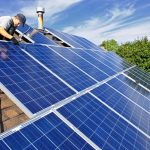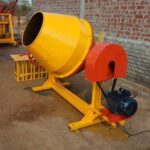As the world moves towards sustainable energy solutions, solar power has become increasingly popular for homeowners and businesses alike. A common question arises: do solar panels need direct sunlight to work? Understanding how solar panels function and their efficiency in different lighting conditions can help individuals make informed decisions about adopting solar technology.
How Solar Panels Work
Solar panels, also known as photovoltaic (PV) panels, convert sunlight into electricity. They consist of many solar cells made from semiconductor materials, typically silicon. When sunlight hits these cells, it excites electrons, creating an electric current. This process is called the photovoltaic effect. The more sunlight that strikes the solar cells, the more electricity is generated.
The Role of Sunlight in Solar Panel Efficiency
1. Direct vs. Indirect Sunlight
While solar panels do work best in direct sunlight, they are still capable of generating electricity in indirect sunlight, cloudy conditions, and even shade. However, their efficiency diminishes without direct sunlight. For instance, during overcast days, solar panels can still produce energy, but the output may be significantly lower—sometimes by 20% to 50% compared to sunny conditions.
2. Efficiency Ratings
The efficiency of a solar panel is typically rated based on its performance under standard test conditions, which include direct sunlight at a specific intensity (usually 1000 watts per square meter). Panels with higher efficiency ratings convert a larger portion of sunlight into electricity, making them more effective in less-than-ideal conditions. Therefore, while direct sunlight maximizes efficiency, high-quality solar panels can still perform admirably in lower light situations.
Factors Influencing Solar Panel Performance
Several factors affect the performance of solar panels beyond just the amount of direct sunlight they receive:
1. Angle and Orientation
The angle and orientation of solar panels play a crucial role in their ability to capture sunlight. Panels facing south in the Northern Hemisphere or north in the Southern Hemisphere typically receive the most direct sunlight throughout the day. Adjusting the tilt of the panels can optimize exposure and improve energy generation, even during seasons with less sunlight.
2. Temperature
Interestingly, solar panels are more efficient at lower temperatures. While they require sunlight to generate energy, extreme heat can actually reduce their efficiency. It’s essential to ensure proper ventilation and cooling to maintain optimal performance.
3. Quality of Solar Panels
The quality and type of solar panels used also influence performance. Some panels are specifically designed for higher efficiency and better performance in low-light conditions. Investing in high-quality solar panels can lead to better energy production, even on cloudy days.
Conclusion
In summary, while solar panels do need direct sunlight to work, they can still generate electricity in indirect sunlight and cloudy conditions. Understanding this nuance is vital for potential solar panel users, as it underscores the importance of choosing the right type of panels and properly installing them to maximize efficiency.
For those considering a solar energy system, it’s important to assess their specific environment, including average sunlight exposure, roof orientation, and potential shading from trees or buildings. By doing so, homeowners can make informed decisions and enjoy the benefits of solar energy regardless of direct sunlight availability. As technology advances, the efficiency and effectiveness of solar panels will continue to improve, making solar energy a viable option for a broader range of conditions.






